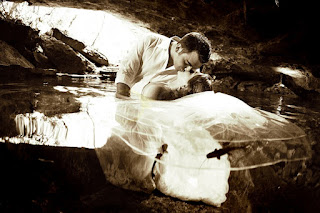JOHN MICHAEL COOPER has pioneered a new creative, artistic, movement in the world of wedding photography : Trash the Dress.
Link to his blog :
Examples of his work:
 |
| My Ophelia-2005 |
 |
| My Romeo and Juliet-2009 |
WPJA, the Professional Association of Wedding Photographers, presented a Trash the dress contest in 2008, under 4 categories:
WATER:
 | ||
| Kevin Beasley-First place 2008 http://kevinbeasley.com/ |
 | |||||
| Kevin Beasley-10th place 2008 |
 | |
| Marcin Labedski-1st place 2008 http://www.bwphotography.pl/ |
 |
| Paul Johnson-4th place 2008 http://www.pauljohnsonphoto.com |
 | |
| Paulina Westerlind_1st Place 2008 http://www.pwfoto.com/ |
 |
| Bartosz Jastal_1st place 2008 http://www.bartoszjastal.com/ |
 | ||
| Justina Ortyl- 2nd place http://www.justynaortyl.com/ |
Other Trash the dress photographers:
 |
| Jessica Messer http://www.jessicamesser.com |
 |
| Mark Theisinger http://www.marktheisinger.com/ |
 |
| Mark Theisinger |
 |
| Mark Theisinger |
 |
| Mark Theisinger |
 | ||||
| Fuller Edge http://www.fulleredge.com/ |
Contact: info@delsolphotography.com
DEL SOL PHOTOGRAPHY:
http://www.delsolphotography.com/





































